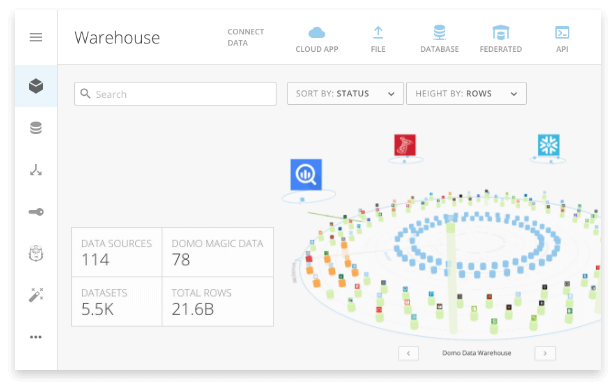How the data analysis process provides value to businesses
The practice of examining data to discover pertinent information is known as data analysis. This involves data examination, cleaning, transformation, and modeling through analytical and statistical methods.
Businesses can use data to increase revenue, improve consumer understanding, and enhance advertising efforts. However, these objectives cannot be realized without the appropriate data analytics tools and techniques. Unprocessed data has a vast amount of value, and data analytics can transform it into knowledge that can help businesses expand.
Practical data analysis aids in corporate decision-making for firms, but businesses must first understand what those needs are. Every successful analytical endeavor must have a comprehensive data strategy that ties to real business needs.
Businesses can employ various data analytics approaches to extract relevant data, which becomes beneficial in informing the decision process. The primary objective of data analysis is to inform decisions. The results of thorough data analysis strengthen companies as they seek to improve client relationships, assess advertising effectiveness, personalize content, and create new products.

Types of data analysis
There are five popular data analysis techniques frequently utilized in business:
Descriptive analysis
All analytical endeavors must begin with the descriptive analysis method, which seeks to explain the general distribution of the data. This analysis is obtained through gathering and generating descriptive statistics, such as the mean or the standard deviation, of data from diverse sources.
Exploratory analysis
Once you get familiar with the distribution of the data, the exploratory analysis is when you further explore the data in order to make connections. The exploratory analysis helps you understand how different variables are related.
Diagnostic analysis
Diagnostic data analytics enables businesses to clearly understand the context in which something occurred.
The diagnostic analysis is one of the most significant stages because it offers insight into what occurred to produce the data. Knowing the “why” behind the data enables you to identify the precise approaches to solving the problem.
Predictive analysis
Predictive analysis employs artificial intelligence and machine learning in addition to the diagnostic, descriptive, and exploratory processes. This way, you can explore your data to find future trends and causal links.
Prescriptive analysis
Prescriptive analysis will allow you to actively participate in deriving solutions to business problems. This technique enables you to discover the best course of action to take as you seek to resolve the issues you face in your organization.
Advantages of data analysis
Better consumer targeting
A business’s most crucial resource is unquestionably its customers. Through in-depth analysis of customer data, you can discover your consumers’ preferred communication channels, purchase behavior, interests, demographics, and habits. In the long run, it will enable you to find new potential clients, prevent you from wasting money on miscommunication or mistargeting, and help your marketing initiatives succeed.
Enhanced customer service
Data analytics gives you a deeper understanding of your clients, enabling you to meet their demands through more individualized service. Your data can provide details about your clients’ concerns and complaints, as well as information about their hobbies, desires, and more.
Cost savings
Businesses can identify patterns in financial data and make changes for improvement by relying on predictive analytics. Not only that, but analysts may also predict supply and production by forecasting various metrics, such as sales and demand. Knowing these predicted values will eventually enable you to avoid wasting money and resources on misguided strategies.
Informed judgments
Data analysis lets you base decisions and judgments on data rather than feelings or speculation. For instance, you can forecast your revenue, recognize growth opportunities, or deal with unusual circumstances before they become real issues.
More accurate knowledge
With the help of data analysis, you can get better and more accurate knowledge and information. As a result, the information gathered can be used to create future plans and further propel you towards your business’s mission and vision.

Steps involved in data analysis
1. Identification of business questions
The identification step is when you decide what questions you will need to answer. You are better prepared for the following phases once you have a question you’re aiming to answer as a result of the analysis. These questions give direction to your analysis.
2. Data collection
Data collection is where you begin to gather the necessary data. In data collection, you clearly identify the sources of data that you need to connect to and which specific metrics you’ll use from each source. Data collection can take many forms and can include data from external or internal sources.
3. Data cleaning
Once you obtain the required data, you should clean it and get it ready for analysis. Not all of the data you get will be valuable; you’ll likely end up with duplicate or improperly formatted data if you gather significant volumes of data. To prevent using inaccurate data in your analysis, you must ensure that all formatting errors, blank spaces, and duplicate records are removed from your data before you begin working with it. This step can be cumbersome, but it is crucial to sift through erroneous data in order to use only the best data in further analyses.
4. Data analysis
Analyzing the data is where you begin to explore and manipulate your data to draw pertinent conclusions. You can do this using data analysis software or programming languages that are suitable for data analytics, such as Python and R. Business intelligence tools enable non-technical users to conduct in-depth analyses. During this step, you can discover patterns, correlations, and trends, which can assist you in finding the answers to the questions you initially identified in the first step of this process.
5. Data visualization
Data visualization is the stage where you present information graphically so that viewers can better comprehend it. By comparing datasets and identifying relationships visually, you can discover insights that may have been previously hidden.
6. Data interpretation
This is the stage where you evaluate your data and determine the best courses of action based on your findings. This is where you’ll be able to use the insights you gained in order to answer the questions you identified early on. This step is where you see the real value that comes from data analysis.
Conclusion
The companies that are successful in today’s market are those that make use of data and extract value from it through in-depth data analysis. By following these simple steps, your organization can grow and thrive as leaders and employees alike make better data-driven decisions.
Check out some related resources:

Sisense Alternatives & Competitors

10 Looker Alternatives and Competitors in 2025






